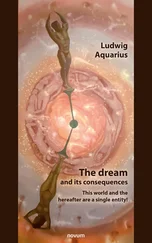The best antidote to astrology in particular and to pseudoscience in general is, as Carl Sagan has written, real science, whose wonders are as amazing but have the added virtue of probably being real. After all, it's not the outlandishness of its conclusions that makes something a pseudoscience: lucky guesses, serendipity, bizarre hypotheses, and even an initial gullibility all play a role in science as well. Where pseudosciences fail is in not subjecting their conclusions to a test, in not linking them in a coherent way to other statements which have withstood scrutiny. It's hard for me to imagine Shirley MacLaine, for example, rejecting the reality of some seemingly paranormal event such as trance channeling merely because there isn't enough evidence for it, or because there is a better alternative explanation.
EXTRATERRESTRIAL LIFE, YES;
VISITORS IN UFO, NO
In addition to astrology, innumerates are considerably more likely than others to believe in visitors from outer space. Whether or not there have been such visits is a question distinct from whether or not there is other conscious life in the universe. I'll develop some very approximate estimates to indicate why, though there probably are other life forms in our very galaxy, they most likely haven't paid us a courtesy call (despite the claims of books such as Budd Hopkins's The Intruders and Whitley Strieber's Communion). The estimates provide a good example of how numerical horse sense can check pseudoscientific ravings.
If intelligence developed naturally on earth, it is difficult to see why the same process wouldn't have occurred elsewhere. What's needed is a system of physical elements capable of many different combinations, and a source of energy through the system. The energy flux causes the system to "explore" various combinations of possibilities, until a small collection of stable, complex, energy-storing molecules develops, followed by the chemical evolution of more complex compounds, including some amino acids, from which proteins are constructed. Eventually, primitive life develops, and then shopping malls.
It's estimated that there are approximately 100 billion stars (10 11) in our galaxy, of which, say, 1/ 10th support a planet. Of these approximately 10 billion stars, perhaps one out of a hundred contains a planet which lies within the life zone of the star, not too close for its solvent, water or methane or whatever, to boil away and not too far to be frozen solid. Now we're down to approximately 100 million stars (10 8) in our galaxy which could support life. Since most of them are considerably smaller than our sun, only about 1/ 10th of these stars should be considered reasonable candidates for supporting planets with life. Still, this leaves us with 10 million stars (10 7) in our galaxy alone capable of supporting life, of which perhaps 1/ 10th have already developed life! Let's assume that there are indeed 10 6-or a million-stars with planets which support life in our own galaxy. Why don't we see any evidence?
One reason is that our galaxy is a big place, having a volume of about 10 14cubic light-years where a light-year is the distance light travels in one year at 186,000 miles per second-about 6 trillion miles. Thus, on average, each of these million stars has 10 14divided by 10 6cubic light-years of volume for itself; that's 10 8cubic light-years of volume for each star assumed to support life. The cube root of 10 8is approximately 500, meaning that the average distance between any one of the galaxy's life-supporting stars and its closest neighbor would be 500 light-years-about ten billion times the distance between the earth and the moon! The distance between close "neighbors," even if it were considerably less than the average, would seem to preclude frequent popping in for a chat.
The second reason we would be quite unlikely to see any little green men is that possible civilizations are bound to be scattered in time, coming into existence and then dying out. In fact, it could well be the case that life, once it becomes complex, is inherently unstable and will self-destruct within a few thousand years. Even if such advanced life forms had an average duration of 100 million years (the time from early mammals to a possible twentieth-century nuclear holocaust), these life forms spread uniformly over the 12-15 billion-year history of our galaxy would result in fewer than 10,000 stars in our galaxy supporting advanced life at any one time. The average distance between neighbors would jump to more than 2,000 light-years.
The third reason we haven't had any tourists is that even if life has developed on a number of planets within our galaxy, there's probably little likelihood they'd be interested in us. The life forms could be large clouds of methane gas, or self-directed magnetic fields, or large plains of potato-like beings, or giant planet-sized entities which spend their time singing complex symphonies, or more likely a sort of planetary scum adhering to the sides of rocks facing their sun. There's little reason to suppose that any of the above would share our goals or psychology and try to reach us.
In short, though there probably is life on other planets in our galaxy, the sightings of UFOs are almost certainly just that-sightings of unidentified flying objects. Unidentified, but not unidentifiable or alien.
FRAUDULENT MEDICAL TREATMENTS
Medicine is a fertile area for pseudoscientific claims for a simple reason. Most diseases or conditions (a) improve by themselves; (b) are self-limiting; or (c) even if fatal, seldom follow a strictly downward spiral. In each case, intervention, no matter how worthless, can appear to be quite efficacious.
This becomes clearer if you assume the point of view of a knowing practitioner of fraudulent medicine. To take advantage of the natural ups and downs of any disease (as well as of any placebo effect), it's best to begin your worthless treatment when the patient is getting worse. In this way, anything that happens can more easily be attributed to your wonderful and probably expensive intervention. If the patient improves, you take credit; if he remains stable, your treatment stopped his downward course. On the other hand, if the patient worsens, the dosage or intensity of the treatment was not great enough; if he dies, he delayed too long in coming to you.
In any case, the few instances in which your intervention is successful will likely be remembered (not so few, if the disease in question is self-limiting), while the vast majority of failures will be forgotten and buried. Chance provides more than enough variation to account for the sprinkling of successes that will occur with almost any treatment; indeed, it would be a miracle if there weren't any "miracle cures."
Much of the above applies as well to faith healers, psychic surgeons, and an assorted variety of other practitioners from homeopathic physicians to TV evangelists. Their prominence constitutes a strong argument for an infusion of healthy skepticism into our schools, a state of mind generally incompatible with innumeracy. (By this dismissive attitude toward these charlatans, however, I don't mean to advocate a rigid and dogmatic scientism or some kind of simpleminded atheism. There's a long way from Adonai to I Don't Know to I Deny-to adapt a line from poet Howard Nemerov-and plenty of room in the middle for reasonable people to feel comfortable.)
Even in outlandish cases, it's often difficult to refute conclusively some proposed cure or procedure. Consider a quack diet doctor who directs his patients to consume two whole pizzas, four birch beers, and two pieces of cheesecake for every breakfast, lunch, and dinner, and an entire box of fig bars with a quart of milk for a bedtime snack, claiming that other people have lost six pounds a week on such a regimen. When several patients follow his instructions for three weeks, they find they've gained about seven pounds each. Have the doctor's claims been refuted? Not necessarily, since he might respond that a whole host of auxiliary understandings weren't met: the pizzas had too much sauce, or the dieters slept sixteen hours a day, or the birch beer wasn't the right brand. The point is that one can usually find loopholes which will enable one to hold on to whatever pet theory one fancies.
Читать дальше












